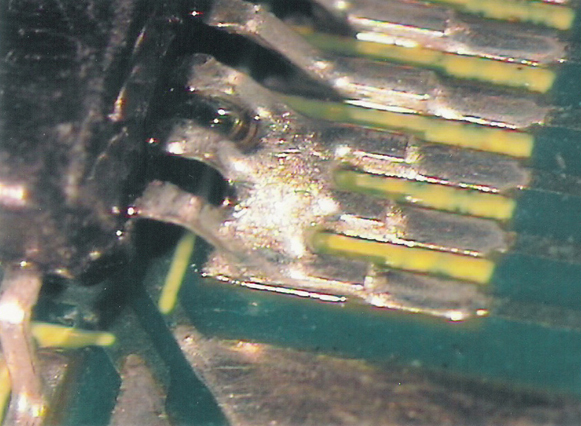Bridging Issues
Issue Description: Bridging is a condition where solder flows between connectors causing a bridge or short.
 1) Reduction of solder paste volume or component lead size can correct this issue.
1) Reduction of solder paste volume or component lead size can correct this issue.
Stencil modification to reduce the volume or location of the solder paste on the pad can dramatically reduce bridging.
Use of a component with shorter leads will reduce the potential for solder to flow up and between leads. The solder must wet relatively more area on the pad leaving less volume to flow up the lead.
2) Modification of the reflow profile can also correct this issue.
Increasing the time above liquidus will allow more time for the solder to flow where it is supposed to be. Once the pads and leads reach the same temperature, the solder will wet both causing the solder to move to the intended location.
Increasing soak time will equalize temperatures across the assembly reducing the tendency for solder to flow to the warmer surfaces. The component leads can be warmer than the pad due to their lower thermal mass and increased air flow around the lead. Liquid solder tends to flow to the warmer surface first.
3) Circuit board design can be modified to reduce the tendency for bridging.
Solder mask dams can be added between fine pitch pads to prevent solder from bridging.
Use of solder mask defined pads can prevent bridging, especially in tight pitch areas like BGAs and LGAs.
4) Off contact solder paste printing can cause excessive solder volume resulting in bridging.
Modify the stencil design to reduce the amount of solder paste in trouble areas.
Modify the circuit board design to eliminate the causes of off contact printing. Legend marking ink next to solder mask defined pads can cause off contact of several mils resulting in much higher solder paste volume.

